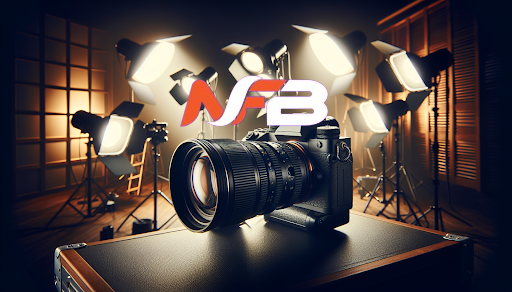Introduction to EX Lighting and Cameras
In today’s world, many industries require work in hazardous environments where the presence of flammable gases, vapours, or dust can create potentially explosive atmospheres. To ensure the safety of personnel and equipment in these areas, specialised lighting and camera equipment, known as EX lighting and EX cameras, are essential. These devices are designed and certified to operate safely in explosive atmospheres, preventing ignition and minimising the risk of accidents.
Understanding Hazardous Environments
Hazardous environments are classified into different zones based on the likelihood and duration of the presence of explosive atmospheres. These zones are:
- Zone 0: An area where an explosive atmosphere is present continuously or for long periods.
- Zone 1: An area where an explosive atmosphere is likely to occur periodically during normal operation.
- Zone 2: An area where an explosive atmosphere is not likely to occur during normal operation, and if it does, it will only persist for a short time.
Understanding these zones is crucial when selecting the appropriate EX lighting and EX cameras for your specific application.
EX Lighting: Illuminating Hazardous Areas Safely
EX lighting is designed to provide safe and reliable illumination in hazardous environments. These lighting solutions come in various forms, including:
Types of EX Lighting
- EX LED Luminaires: LED-based lighting fixtures that offer energy efficiency, long lifespan, and excellent colour rendering.
- EX Fluorescent Luminaires: Traditional fluorescent lighting fixtures designed for hazardous areas.
- EX High Bay Luminaires: Powerful lighting solutions for high ceiling industrial spaces.
- EX Floodlights: Robust and weatherproof lighting for outdoor hazardous areas.
- EX Emergency Lighting: Essential backup lighting that activates during power failures to ensure safe evacuation.
Choosing the Right EX Lighting
When selecting EX lighting for your application, consider the following factors:
- Ex Protection Method: Ensure that the lighting equipment has the appropriate Ex protection method for your specific hazardous environment (e.g., Ex d, Ex e, Ex m, Ex p).
- Ingress Protection (IP) Rating: Choose lighting with suitable IP ratings to protect against dust and moisture ingress.
- Lumens and Colour Temperature: Consider the required light output (lumens) and colour temperature (Kelvin) for your application.
- Mounting Options: Select lighting fixtures with appropriate mounting options for your facility, such as pendant, surface, or pole mounting.
- Energy Efficiency: Opt for energy-efficient EX lighting solutions to reduce operating costs and environmental impact.
EX Cameras: Capturing Images and Video in Explosive Atmospheres
EX cameras are essential tools for monitoring, inspection, and surveillance in hazardous environments. These cameras are designed to prevent ignition and withstand the harsh conditions found in explosive atmospheres.
Types of EX Cameras
- EX Fixed Cameras: Stationary cameras for continuous monitoring of specific areas.
- EX PTZ Cameras: Pan-tilt-zoom cameras that offer remote control and wide area coverage.
- EX Thermal Cameras: Cameras that detect heat signatures, useful for identifying hot spots and potential ignition sources.
- EX Dome Cameras: Discreet and vandal-resistant cameras for indoor and outdoor surveillance.
- EX Borescope Cameras: Compact cameras for inspecting hard-to-reach areas, such as tanks, pipes, and vessels.
Key Features of EX Cameras
When choosing EX cameras, look for the following features:
- Ex Protection Method: Ensure that the camera has the appropriate Ex protection method for your specific hazardous environment (e.g., Ex d, Ex e, Ex m, Ex p).
- Resolution and Image Quality: Choose cameras with high resolution and good low-light performance for clear and detailed images.
- Connectivity Options: Consider cameras with various connectivity options, such as Ethernet, fibre optic, or wireless, depending on your infrastructure.
- Rugged Design: Select cameras with rugged housings, shock and vibration resistance, and wide operating temperature ranges to withstand harsh environments.
- Analytics and Integration: Look for cameras with built-in analytics and integration capabilities with other safety systems, such as gas detectors and alarms.
Certifications and Standards for EX Lighting and Cameras
To ensure the safety and reliability of EX lighting and EX cameras, it is essential to choose equipment that complies with relevant international standards and certifications.
Key Certifications and Standards
- ATEX Directive: European Union directive for equipment used in potentially explosive atmospheres.
- IECEx Scheme: International certification scheme for equipment used in explosive atmospheres.
- NEC and CEC: National Electrical Code (US) and Canadian Electrical Code standards for hazardous locations.
- UL and CSA: Underwriters Laboratories (US) and Canadian Standards Association certifications for safety and performance.
Importance of Proper Certification
Using properly certified EX lighting and EX cameras is crucial for several reasons:
- Safety: Certified equipment minimises the risk of ignition and ensures the safety of personnel and assets in hazardous environments.
- Compliance: Compliance with regulations and standards is mandatory in most industries and jurisdictions.
- Liability: Using non-certified equipment can lead to legal liabilities and financial consequences in case of accidents or incidents.
- Insurance: Many insurance policies require the use of certified equipment in hazardous areas to maintain coverage.
Maintenance and Best Practices for EX Lighting and Cameras
Proper maintenance and following best practices are essential to ensure the long-term performance and safety of EX lighting and EX cameras.
Regular Maintenance
- Inspection: Regularly inspect EX lighting and EX cameras for signs of damage, corrosion, or deterioration.
- Cleaning: Clean equipment according to the manufacturer’s guidelines to maintain optimal performance and prevent the build-up of dust or debris.
- Repairs and Replacements: Only use certified spare parts and have repairs performed by qualified personnel to maintain the equipment’s integrity.
- Testing: Conduct periodic functional tests to ensure the equipment operates as intended and to identify any potential issues.
Best Practices
- Training: Provide adequate training to personnel on the proper use, handling, and maintenance of EX lighting and EX cameras.
- Documentation: Maintain accurate records of equipment specifications, certifications, maintenance, and repairs.
- Risk Assessment: Regularly perform risk assessments to identify potential hazards and ensure the suitability of the equipment for the specific environment.
- Proper Storage: Store EX lighting and EX cameras in a secure and suitable location when not in use to prevent damage or unauthorised access.
- Disposal: Follow appropriate disposal procedures for end-of-life equipment to ensure environmental protection and prevent unauthorised reuse.
Conclusion
EX lighting and EX cameras are essential tools for ensuring safety and maintaining operations in hazardous environments. By understanding the different types of equipment, their key features, and the importance of proper certification, you can make informed decisions when selecting the appropriate gear for your specific application.
Regular maintenance and following best practices are crucial to ensure the long-term performance and safety of your EX lighting and EX cameras. By investing in high-quality, certified equipment and prioritising proper upkeep, you can minimise the risk of accidents, comply with regulations, and protect your personnel and assets in hazardous environments.
As technology continues to advance, new and innovative EX lighting and EX camera solutions will emerge, offering improved performance, energy efficiency, and enhanced safety features. Staying informed about the latest developments in this field will help you stay ahead of the curve and ensure that your facility remains safe, compliant, and efficient in the face of evolving challenges.














Leave a Reply